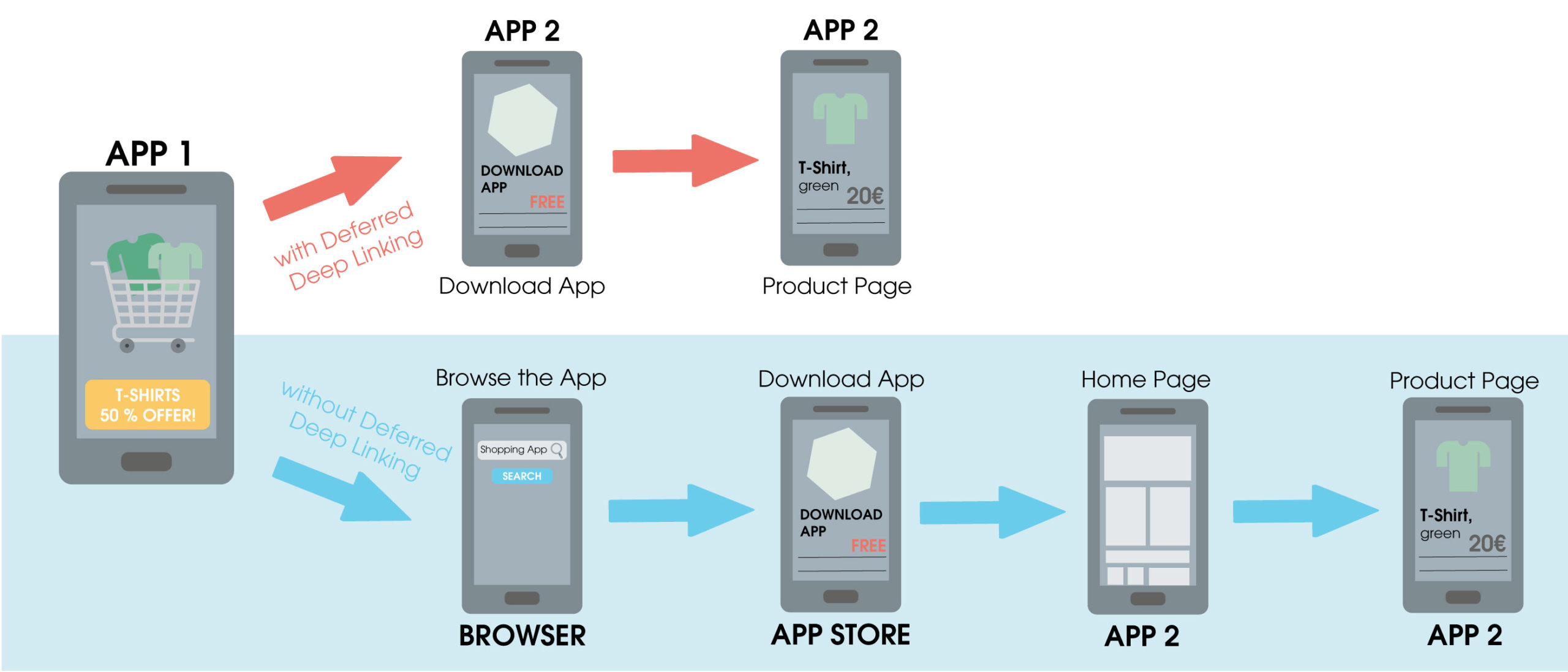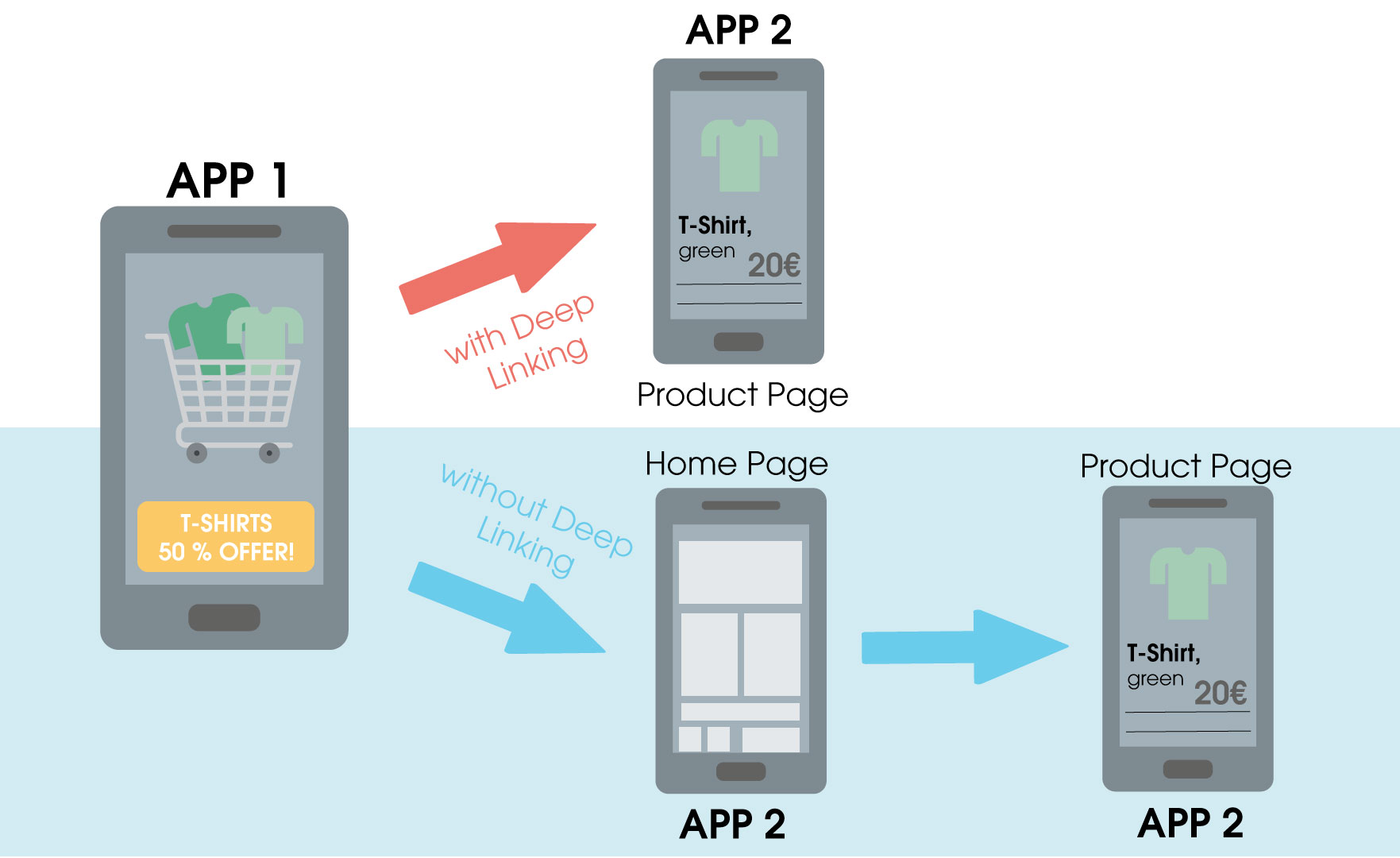Deep hot linking might sound like something straight out of a tech thriller, but it’s actually a powerful tool that can transform how you share and distribute digital content. Whether you're a developer, marketer, or just someone curious about the inner workings of the web, understanding deep hot linking is crucial in today's digital landscape. So, buckle up because we're diving deep into what it is, how it works, and why it matters.
Think of deep hot linking as the secret sauce that lets you grab specific pieces of content directly from another website and display them on your own. Sounds cool, right? But hold your horses—it’s not all sunshine and rainbows. There are some serious implications to consider, both legally and ethically. That's where this article comes in. We'll break it down step by step so you know exactly what you're getting into.
By the time you finish reading this, you'll have a solid grasp of deep hot linking, its pros and cons, and how to use it responsibly. Plus, we'll sprinkle in some expert tips and tricks to keep things interesting. Let's get started!
- Unveiling The Charismatic Outlander Character Jamie A Deep Dive Into His World
- Nardwuar Age The Untold Story Behind The Legendary Interviewers Life
Table of Contents:
- What is Deep Hot Link?
- How Does Deep Hot Link Work?
- Legal Considerations
- Benefits of Deep Hot Link
- Risks and Challenges
- Best Practices
- Tools for Deep Hot Link
- Real-World Examples
- Future of Deep Hot Link
- Conclusion
What is Deep Hot Link?
Deep hot linking refers to the process of embedding or linking directly to specific files, images, videos, or other media hosted on someone else’s server. Unlike regular hyperlinks, which direct users to an entire webpage, deep hot links point directly to the source file. This means that when someone clicks on or loads your content, they're actually accessing the original file from the third-party server.
Imagine you want to showcase a stunning image on your blog, but instead of downloading and rehosting it, you simply link directly to the image URL on another site. Voila—you’ve just created a deep hot link. While it might save you bandwidth and storage space, it can also create issues for the original host if too many people do the same thing.
- Hamel Veronica The Rising Star You Need To Know About
- Ralph Sampson Rockets The Legendary Journey Of A Basketball Icon
It’s like borrowing someone’s Wi-Fi without asking. Sure, it works for you, but it might slow down their connection—or worse, violate their terms of service. So, let’s dive deeper into how this works and why it’s such a big deal.
Direct vs Indirect Linking
There’s a subtle but important difference between direct and indirect linking. Direct linking, also known as hot linking, is when you embed or link directly to a file hosted elsewhere. Indirect linking, on the other hand, involves pointing users to a webpage that contains the file, allowing them to decide whether to interact with it or not.
Think of it like this: direct linking is like cutting the line at a concert to get straight to the front row, while indirect linking is like buying a ticket and going through the proper channels. Both have their place, but one is definitely more controversial than the other.
How Does Deep Hot Link Work?
At its core, deep hot linking works by leveraging the way browsers handle URLs. When you embed a file using an HTML tag like ,
Here’s a quick breakdown of how it happens:
- URL Identification: You identify the exact URL of the file you want to embed.
- Embedding Code: You write the appropriate HTML code to include the file in your webpage.
- Server Request: When someone visits your site, their browser sends a request to the original server for the file.
- File Delivery: If the server permits, it delivers the file, which is then displayed on your page.
Simple, right? Well, not exactly. There are tons of factors that can affect how this works, including server settings, file permissions, and even browser behavior. Let’s explore some of these in more detail.
Common Use Cases
Deep hot linking is used in a variety of scenarios, both legitimate and questionable. Here are a few examples:
- Content Sharing: Sharing images, videos, or audio clips from reputable sources like YouTube or Vimeo.
- Resource Optimization: Reducing the load on your own server by leveraging external hosting.
- SEO Tactics: Improving search engine rankings by embedding high-quality content from trusted sites.
- Unauthorized Usage: Using someone else’s content without permission, often leading to legal or ethical issues.
As you can see, the line between good and bad usage isn’t always clear-cut. That’s why it’s important to understand the legal and ethical considerations before diving in.
Legal Considerations
Now, let’s talk about the elephant in the room: legality. While deep hot linking isn’t inherently illegal, it can raise some serious legal concerns depending on how it’s used. Most websites have terms of service that explicitly prohibit unauthorized embedding or linking of their content. Violating these terms can lead to copyright infringement claims, DMCA takedown notices, or even lawsuits.
For example, if you hot link to a copyrighted image without permission, the owner could sue you for damages. Similarly, if you overload a server with excessive requests, you could be accused of bandwidth theft or denial-of-service attacks. Not exactly the kind of attention you want, right?
It’s also worth noting that laws around deep hot linking vary by country. In some places, it’s considered fair use as long as proper attribution is given. In others, it’s strictly prohibited unless explicitly allowed by the content owner. Always check local regulations and the site’s terms of service before proceeding.
Copyright and Licensing
Copyright is one of the biggest hurdles when it comes to deep hot linking. Most digital content is protected by copyright law, meaning you need permission to use it in any form. Even if you don’t download or modify the file, simply embedding it without consent can still land you in hot water.
Licensing agreements can help clarify what’s allowed and what’s not. For instance, Creative Commons licenses often permit embedding under certain conditions, such as providing attribution or limiting commercial use. Always read the fine print and make sure you’re compliant before embedding someone else’s content.
Benefits of Deep Hot Link
Despite the potential pitfalls, deep hot linking does have its advantages. When used responsibly, it can save you time, money, and resources while enhancing your content. Here are a few key benefits:
- Reduced Bandwidth Costs: By hosting files on someone else’s server, you save on bandwidth and storage expenses.
- Improved Performance: Leveraging faster, more reliable servers can improve your site’s loading speed and user experience.
- Access to High-Quality Content: Embedding content from trusted sources ensures your audience gets the best possible experience.
- Enhanced SEO: Including relevant, engaging media can boost your search engine rankings and attract more visitors.
Of course, these benefits come with caveats. You still need to ensure you’re using the content legally and ethically, and you should always consider the impact on the original host. After all, you wouldn’t want someone doing the same thing to your site, would you?
Risks and Challenges
While deep hot linking can be a powerful tool, it’s not without its risks. Here are a few challenges you might face:
- Bandwidth Theft: Overloading someone else’s server with excessive requests can strain their resources and lead to conflicts.
- Content Removal: If the original file is deleted or moved, your embedded content will break, leaving your site looking incomplete.
- Security Risks: Embedding untrusted content can expose your site to malware, phishing attacks, or other security threats.
- Reputation Damage: Using someone else’s content without permission can harm your credibility and damage relationships with partners or clients.
These risks highlight the importance of using deep hot linking responsibly and with caution. Always weigh the pros and cons before deciding whether to embed someone else’s content.
Hot Linking Prevention Techniques
Website owners have several ways to protect their content from unauthorized deep hot linking. Some common techniques include:
- Referrer Restrictions: Blocking requests from unauthorized domains using referrer headers.
- Token Authentication: Requiring a unique token or key to access certain files.
- Hot Link Protection: Implementing server-side rules to prevent embedding from external sites.
- Watermarking: Adding visible or invisible watermarks to images or videos to deter misuse.
By implementing these measures, site owners can better control how their content is used and protect their resources from abuse.
Best Practices
So, how can you use deep hot linking responsibly? Here are a few best practices to keep in mind:
- Get Permission: Always ask the content owner for permission before embedding their files.
- Provide Attribution: Give proper credit to the original creator and include a link to their site.
- Use Trusted Sources: Only embed content from reputable, reliable sources to avoid security risks.
- Cache Locally: Consider downloading and hosting important files locally to ensure continuity.
By following these guidelines, you can enjoy the benefits of deep hot linking while minimizing the risks and respecting the rights of others.
Tools for Deep Hot Link
There are several tools and platforms that can help you manage and optimize deep hot linking. Here are a few worth checking out:
- Cloudflare: Offers robust hot linking protection features to secure your site’s content.
- Hotlink Protector: A WordPress plugin that blocks unauthorized embedding of your media files.
- Google Analytics: Tracks referral traffic and helps identify potential hot linking issues.
- CDN Services: Content Delivery Networks like Amazon CloudFront or Akamai can optimize file delivery and reduce bandwidth costs.
These tools can help you protect your own content while also making it easier to embed content from others in a responsible manner.
Real-World Examples
To give you a better idea of how deep hot linking works in practice, here are a few real-world examples:
- YouTube Embeds: Many websites use YouTube’s embed feature to include videos without hosting them locally.
- Twitter Cards: Twitter allows developers to embed tweets directly into webpages, enhancing engagement and sharing.
- WordPress Media Library: Bloggers often use deep hot linking to include images or videos from external sources.
These examples demonstrate how deep hot linking can be used effectively when done correctly. They also highlight the importance of following guidelines and respecting the rights of content owners.
Future of Deep Hot Link
As technology continues to evolve, the future of deep hot linking remains uncertain. Advances in AI, blockchain, and digital rights management could change how content is shared and protected online. For now, though, deep hot linking remains a valuable tool for developers and content creators alike.
Looking ahead, it’s likely we’ll see stricter regulations and more advanced protection mechanisms to combat unauthorized usage. At the same time, platforms may offer more flexible licensing options to encourage responsible sharing and



Detail Author:
- Name : Kaden Price
- Username : grant.ally
- Email : orville.collins@brekke.biz
- Birthdate : 1976-11-10
- Address : 894 Cole Bridge Apt. 334 Lake Jasen, MN 23463-7426
- Phone : (513) 562-3734
- Company : Oberbrunner PLC
- Job : Computer Security Specialist
- Bio : Quis aperiam eligendi eos animi mollitia saepe. Quod sint dolorem consequatur numquam quidem. Cum fugit consequatur id maxime est neque rerum.
Socials
instagram:
- url : https://instagram.com/frank.haag
- username : frank.haag
- bio : Recusandae aspernatur repudiandae minima quaerat ullam. Culpa excepturi aut consequatur.
- followers : 3701
- following : 475
facebook:
- url : https://facebook.com/frank.haag
- username : frank.haag
- bio : Deserunt ratione qui quo tenetur aliquam.
- followers : 4829
- following : 2646
tiktok:
- url : https://tiktok.com/@frank_haag
- username : frank_haag
- bio : Maxime qui corporis quod voluptas exercitationem asperiores fugiat.
- followers : 5611
- following : 2238